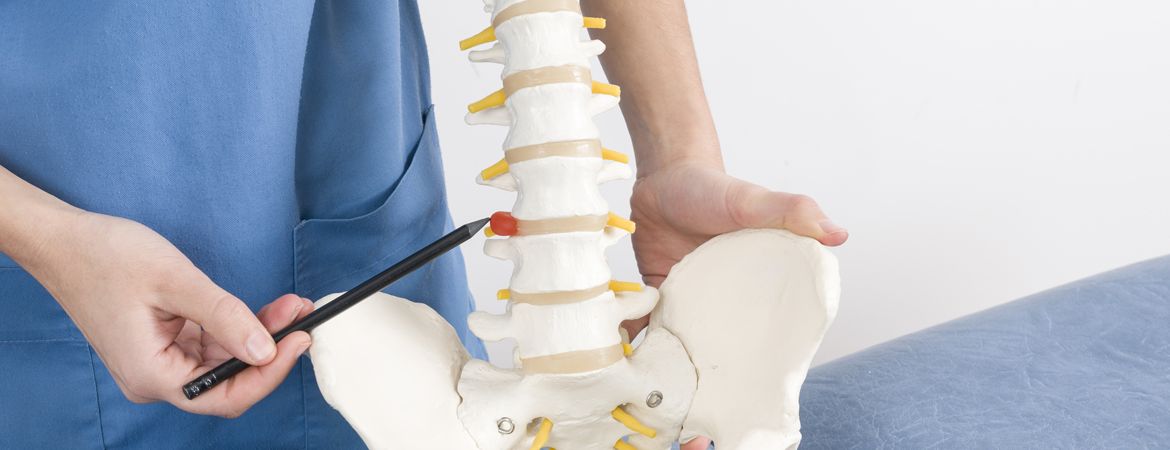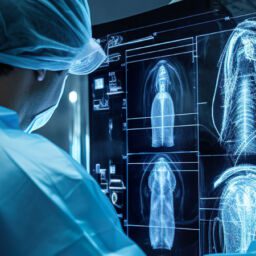
Spinal surgery, or surgery of the vertebral column, is a medical procedure aimed at improving the function and mobility of the spine.
It can involve a variety of different treatments, depending on the patient’s specific condition.
The purpose and benefits of spinal surgery are highly diverse, addressing aspects such as pain management, muscle repair, spinal fusion, and nerve decompression.
Spinal surgery is performed by doctors trained in orthopaedic surgery, neurology, or neurosurgery.
The two main types of spinal surgery are as follows:
Spinal fusion, which is used to treat degenerative conditions such as arthritis, scoliosis, and kyphosis.
Spinal fusion is a surgical procedure aimed at repairing the spine by joining two or more vertebrae together. The goal of spinal fusion is to eliminate movement in a segment of the spine. This helps to reduce pressure on adjacent nerves and stop the pain that might have been caused by the movement of these vertebrae. This procedure is also referred to as spinal arthrodesis.
Spinal decompression, which involves relieving pressure on the spinal cord by repositioning a vertebra that has become misaligned due to an injury or illness.
This process involves placing the patient in a specialised device that applies controlled traction to the spine. The traction forces stretch the vertebrae, allowing them to decompress (separate from one another) and relieve the pressure on compressed spinal discs.
The decompression process improves blood flow to the injured areas of the spine. This helps to remove toxins that have built up around a compressed disc and reduces pain caused by inflammation.
Spinal surgery can be performed through an open incision using surgical instruments or through a minimally invasive approach using small incisions and a camera called an endoscope.
Sténose du canal rachidien : La sténose du canal rachidien est un rétrécissement du canal rachidien, qui contient la moelle épinière. La moelle épinière est un faisceau de nerfs qui transmet les messages entre le cerveau et le corps.
La sténose du canal rachidien peut survenir en cas d’ostéoporose ou de blessure à la colonne vertébrale. Il est également possible qu’une jeune personne soit atteinte d’une sténose du canal rachidien sans qu’aucun signe ou symptôme de la maladie ne se soit manifesté auparavant.
Myélopathie spondylotique cervicale : La myélopathie spondylotique cervicale (MSC) est un état pathologique qui implique la dégénérescence des vertèbres cervicales, ce qui peut entraîner une compression et un empiètement de la moelle épinière.
La myélopathie cervicale est une affection observée chez les personnes âgées, qui se caractérise par une dégénérescence progressive de la colonne cervicale avec érosion de la matière discale et rétrécissement consécutif du canal rachidien. Les symptômes sont souvent similaires à ceux de la spondylose cervicale ou de l’arthrose, mais ils ont tendance à être plus graves.
The conditions treated in our Spine Surgery Department are:
Herniated Disc: A herniated disc occurs when part of the soft, gel-like material inside a spinal disc is pushed out through a tear in the outer layer of the disc. This can cause pain, numbness, tingling, and weakness in the arms or legs, as well as back pain.
Scoliosis and Kyphosis: Scoliosis is a condition where the spine curves sideways and backwards. The term “scoliosis” means “twisted spine.” Kyphosis is a medical condition that causes the shoulders to curve forward, with the spine curving inward. Kyphosis may affect one side of the spine or both.
Osteoporosis: Osteoporosis is a condition where bones become weak and brittle, making them more likely to break. It typically affects older adults but can also affect younger individuals who have passed their peak bone mass in their twenties.
Spinal Fractures: A vertebral fracture is a break in one of the bones of the spine. The spine is made up of vertebrae, which are small bones that protect the spinal cord. A vertebral fracture can cause pain and nerve damage. The severity of a spinal fracture depends on its location, the number of vertebrae affected, and the extent of nerve damage or compression.
Spinal Tumours and Spinal Metastases: Spinal tumours can develop from cancerous or benign cells. They typically grow within the spinal canal, the space that houses the spinal cord and nerve roots. They can also develop in other parts of the spine, such as the ligaments and vertebrae.
Spinal metastases are abnormal growths that arise from cancer cells spreading from other parts of the body to the spine via the lymphatic system or bloodstream. Spinal metastases can cause pain, numbness, weakness, and loss of bowel or bladder control.
You ask, our teams answer.
F.A.Q
Scoliosis is a condition that causes a sideways curvature of the spine. It can range from mild to severe and is most commonly observed in individuals aged 10 to 25.
There are two types of scoliosis:
Idiopathic scoliosis, meaning there is no known cause for the abnormal curvature of the spine.
Structural scoliosis, which is due to an issue with the bones and vertebrae, such as rickets or osteoporosis.
The treatment options for scoliosis include:
Bracing – This helps to keep the spine straight during growth. Braces are typically recommended for children whose spinal curves exceed 10 degrees and for those who continue to experience spinal curvature after they have finished growing (post-puberty).
Physical therapy – Physiotherapists can help strengthen the muscles that support the spine and reduce pain for individuals with scoliosis. They may also recommend exercises to improve posture and build strength.
Surgery – Surgical intervention may be considered if bracing is not effective or if there is a risk of paralysis due to nerve compression caused by the abnormal spinal curve. Surgery is generally not recommended until after puberty, as certain spinal changes can occur during this period.
In medicine and biology, an endoscope (from the Greek words ἔνδον “endon” meaning “inside” and σκοπεῖν “skopein” meaning “to look”) is a surgical instrument used to visualise structures inside a body cavity, for example during surgery or a colonoscopy. An endoscope is a type of fibre optic device that can be inserted into an organ or hollow tube.
Endoscopes have numerous applications, including:
Gynaecological procedures: Hysteroscopy is used to diagnose and treat uterine abnormalities and infertility. Laparoscopic surgery can be performed using an endoscope to assist with the removal of pelvic tissues or other procedures.
Neurosurgery: Endoscopic spinal surgery can be carried out to remove abnormal bone or tissue from the spine.
Ophthalmic surgery: Endoscopic eye surgery involves using an endoscope to perform laser treatment for glaucoma or cataracts.




